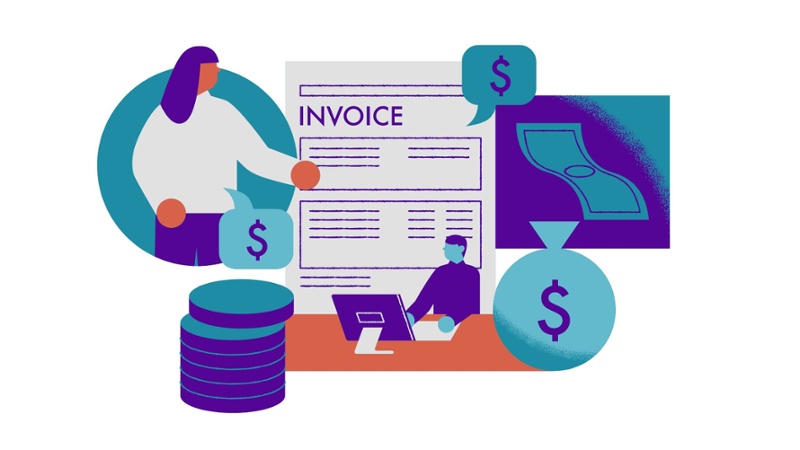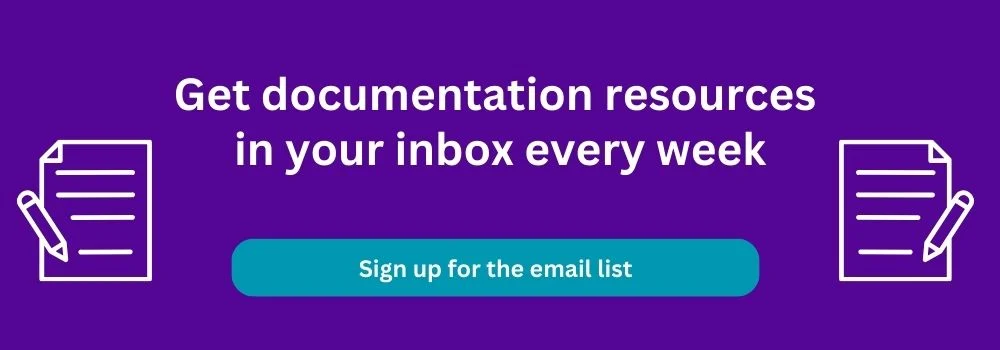If you're trying to start a culture of documentation at your company, you'll likely face objections from people who've never experienced the benefits of written, updated standard operating procedures.
Most objections can be grouped into one or more of these four categories:
Though many objections fall into more than one category, this article will focus on cost-related objections to process documentation.
In part one of this series, I discussed the #1 tip for overcoming objections:
Learn what the objecting person cares about, and explain how this change relates to what they care about.
For example, leaders care about achieving their department goals or company goals, so frame the documentation benefits to explain how it can help achieve those goals more quickly, reliably, and predictably.
In this article, May Busch outlines five types of team members and what each of them cares about. This resource can be helpful for personalizing the objection response.
Discussing the cost of NOT having documentation can be effective in overcoming cost objections. Talk about the team's lost productivity and efficiency, which is clearly seen when employees leave the company and all their knowledge goes with them. The employee's replacements have to restart the same projects or solve the previously solved problems from scratch, losing a lot of time and money.
The Good Words and Knowledge Owl teams do a good job of describing the return on investment (ROI) of doing (and not doing) documentation in this webinar. Though some of this webinar focuses on customer-facing product documentation, many tactics apply to internal process documentation.
Speaking of products, similar to treating culture like a product, treating internal documentation as a product can also help overcome cost objections to documentation because a product's creation and maintenance processes are often more easily understood. Remember that most companies do not have a practice of regular documentation, so many leaders and team members may not be familiar with the processes surrounding the work.
In general, the profitability generated by documentation, in the long run, outweighs the cost of the time involved in the initial creation and maintenance if you set up smart systems of continuous improvement.
Scroll down to find specific scripts for overcoming common cost objections:
These objections were split to frame the responses differently due to many agency employees' hourly billing responsibilities. The "time=money" thinking is often more literal for agencies compared to non-agencies.
Learn more about starting, writing, creating a system for maintenance, and more in this documentation guide.

Objection Example 1
“It takes time away from value-add or revenue-generating work” (non-agency)
Though cost-related objections are often very similar to time objections (since the cost IS the time involved for employees, their salary as an hourly rate), you'll want to frame your responses to emphasize cost savings and money-related words, not just time-savings.
Before we get into the scripts, the underlying objection may be a misconception that there is a huge upfront time effort involved to document ALL the processes at once and then redo them every year or two. Explain the iterative process of starting small, working on the documentation gradually, and improving it over time. This is a much lower lift and a smaller initial time/cost investment than the objecting person may realize. Perhaps this person had a bad past experience with a poorly planned documentation initiative, or they have no experience with documentation.
Here are some scripts you can use to overcome this objection, educating people on the long-term benefits of documentation. Depending on the objecting person's interests, there are several to choose from.
The internal work that generates revenue can be completed more quickly because:“Documentation will help us do the revenue-generating work faster (efficiency), enabling us to earn more revenue.”
- Fewer errors occur, so less rework is needed
- No time was wasted recreating the wheel or hesitating and guessing to remember what to do
- Each team member uses a tested, proven process each time, which has been optimized for efficiency and effectiveness after being documented
- Fewer questions are asked to other team members, preventing bottlenecks waiting for answers and preventing taking the time of the answering person.
- The report “The Cost of Poor Communication” notes that companies lose an average of $62.4 million per year due to poor internal communication processes
- and more
“Documentation helps us do value-add work with fewer errors, reducing re-work time & complaints from customers and internal teams. All these benefts save us money.”
- This is a good one to use for teams complaining about or experiencing a lot of errors and/or lots of complaints from internal or external customers
- Unhappy customers lead to churn, which decreases revenue
- Unhappy customers can lead to negative word-of-mouth, decreasing potential revenue from new customers
- Making a lot of errors reduces the confidence of the team, leading to low morale and employee churn, which is also expensive
- Read more about the costs of poor quality in Alicia Butler Pierre's article
“Having documentation will help train new team members faster, so they can start earning revenue faster."
- There is likely a lot of employee turnover if the culture only emphasizes and rewards obvious sales/revenue-attributable work. And if there is no documentation, these employees take all the knowledge with them.
- Not only will the new team members be able to self-service answer a lot of questions by using documentation, but time will also be saved for the managers and team members whom they would normally ask questions, leaving these people free to continue their revenue-generating work
“Documentation allows us to cross-train employees so anyone can solve customer or internal problems faster when certain team members are unavailable (such as people in other time zones)."
- Everyone now expects their questions to be answered and problems to be solved in an instant. If there is documentation to refer to, whoever is asked the question or tasked to solve a problem can complete the request much faster than re-doing all the research and trial and error that someone else has done before. This can help with customer and employee happiness and retention.
- Many companies are now remote, spanning different time zones. If only one person holds the knowledge to answer a question or solve a certain type of problem, the rest of the team could be waiting 12-60+ hours for an answer, depending on that one person's schedule. That is not fast enough to solve critical problems or answer customer questions and could lose customers and, therefore, revenue
- When only one or a few people can answer certain questions or help customers in real-time, in specific time zones and schedules, the rest of the team responsible for answering similar questions or problems can feel helpless, frustrated, and lose confidence in doing good work. This can also lead to expensive employee turnover.
"Documentation reduces internal meeting time because there is less need to meet if people can self-serve answers. That will give us more time for value-add or revenue activities."
- Aside from sales calls with customers, time spent in meetings is rarely revenue-generating work. Reducing meeting time increases time to complete more valuable work that creates revenue
- An article in Business Communication Research and Practice states that costly hazards such as “overuse of resources, lower efficiency, lack of innovation, more errors, legal complications, recruitment issues, and adequate staffing problems” are a result of weak workplace communication. Weak workplace communication includes defaulting to "let's jump on a call" to repeatedly answer the same questions instead of documenting once for team members to use multiple times.

Objection Example 2
“Don’t spend time on non-billable work” (agencies)
If you hear this objection, it may help to make a case for client documentation first, similar to technical product documentation. Have your agency team deliver process documentation to the client when they complete work for the client.
This additional billable work may be an easier first step towards a documentation culture than trying to change the agency leaders’ beliefs about employees needing 25%+ of their time to be non-billable to create a good workplace culture without burnout.
You could say:
“What if we included documentation time and deliverables into our service offering, similar to technical product documentation? We could include time in our service/billable hours every time we launch something for them. Once we complete a doc for one client we could reuse it for the next clients and customize it for them, saving time each time we make a doc. This would give us somedocumentation for our team to follow while delivering a competitive advantage of value to the client.”
Here are a few more phrases you could use to educate agencies on the long-term benefits of internal documentation:
“Documentation will helps us do the client work faster, which makes the client happier and more likely to upsell or renew.”
- Clients often hire agencies to increase their bandwidth and complete projects faster than they could on their own. Helping deliver on one of their main goals of hiring you will increase the chances of increasing revenue from this client or the clients they may refer.
“Using documentation will give us more consistency in client work we deliver, which makes the time estimates and scoping more accurate or more profitable.”
- Scoping projects is notoriously difficult, to maintain the tricky balance of profitability and customer happiness without your team over-servicing the client. Setting the accurate scope and price upfront can lead to happier customers and less stressed team members, improving revenue and employee retention.
“Documentation will help our team do the client work with fewer errors, increasing client satisfaction and upsells/renewals.”
- Preventable errors often lead to the agency team working additional, unpaid time to fix the problems. Prevent this loss of billable time/revenue by creating and updating accurate process documentation.
“Documentation will help us train new team members faster, either new team members for our agency or new teams for the client.
- There is likely a lot of employee turnover if the company culture is all about billables. Fewer team members means fewer client hours can be serviced and less revenue can be collected.
- Employee turnover is VERY expensive for an agency where its product is its people, and the time it takes to onboard an employee is not billable (which is why many agencies just throw employees into the fire on client hours right away, before they are trained on the company's (non-existent) processes for delivering work, communicating, escalating problems, and more. Don't do this unless you want to risk your relationships and the revenue from existing clients.
- Training services can be an additional source of hours/revenue, and showing your competency in training using documentation can lead to your client asking you to train more of their team
“Documentation assists with team cross-training which allows us to solve client problems faster, when certain team members are unavailable because of their working days or working hours and time zones."
- As mentioned above, clients often hire agencies to solve their problems faster than they could on their own. This speed expectation includes answering questions or solving critical, time-sensitive problems.
- If only one person at the agency holds the knowledge on how to solve those problems or answer those questions, and they are not available, it could lead to a long delay of 12-60+ hours, which could result in losing the client.
- Alternately, solving the problem could take the time of several team members to re-research to try to answer, which may not be billable time and/or may result in an unhappy client who is paying for several less knowledgeable team members vs. one team member who could have answered easily.
I hope these scripts and tactics are helpful in addressing cost-related objections to documentation.
Continue to part three of this series, where we'll discuss overcoming your team's objections related to not understanding the benefits for themselves.
Topics: Documentation



